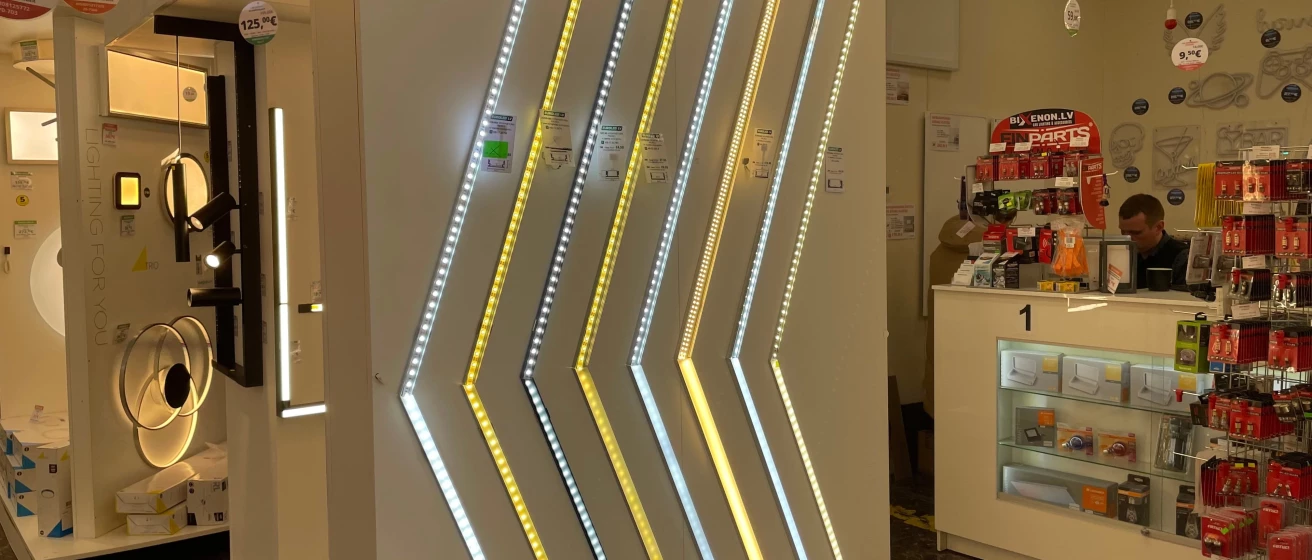
LED lighting, with its high energy efficiency and wide range of applications, has become the number one choice for both home improvement and green energy projects. This technology offers significant advantages over traditional light sources, making it an ideal solution for a variety of lighting needs. Let's take a closer look at the advantages of LED lighting and its diverse applications.
LED Advantages
LED lighting offers several outstanding advantages that make it the number one choice for a variety of lighting projects, from home interiors to industrial and commercial spaces. These advantages include not only energy efficiency and long service life, but also better light quality and environmental protection. Let's take a closer look at these benefits.
Energy efficiency
LED (light emitting diode) lighting is known for its high energy efficiency. Compared to traditional incandescent bulbs, LED bulbs can use up to 80% less energy to provide the same or even more light. This is possible thanks to the efficiency of LED technology, which produces light with less energy consumption, reducing electricity costs and increasing energy savings.
Long service life
LED bulbs have extremely long lifespans, often exceeding 25,000 hours and sometimes reaching 50,000 hours. This means that compared to traditional bulbs, LED bulbs need to be replaced much less frequently, reducing both maintenance costs and waste. Long life is especially important for large rooms and places where changing bulbs is difficult or expensive.
Higher Light Quality
LED lighting provides improved light quality with a high color rendering index (CRI), which means that colors in the room are reproduced more naturally and accurately. LED light sources are available in a wide range of color temperatures, from warm white to daylight color, allowing you to create the desired atmosphere and improve the aesthetics of the room. In addition, LED technology ensures uniform light distribution, reducing glare and shadows.
Nature friendly
LED lighting is more environmentally friendly than traditional light sources. It does not contain mercury or other harmful substances often found in fluorescent lamps and produces less CO2 emissions during production and operation. Thanks to their energy efficiency and long life, LED bulbs reduce waste and energy consumption, promoting a sustainable lifestyle.
Low Heat Production
LED bulbs produce significantly less heat compared to incandescent or halogen bulbs. This makes them a safer choice, especially in rooms where increased heat can cause comfort or safety issues. The low heat production also means that LED lighting is more suitable for use near sensitive objects or materials that can be damaged by excessive heat.
LED applications
LED lighting applications cover a wide spectrum, from residential and commercial spaces to specific and creative applications. The flexibility and efficiency of this technology allows it to be used in a variety of situations, providing both practical and aesthetic benefits. Let's take a closer look at some of the main uses of LED lighting.
House Modernization
LED lighting has become a popular choice for home improvement due to its ability to enhance the aesthetics and functionality of spaces. From kitchens and bathrooms to living spaces and bedrooms, LED light sources can create a warm and inviting atmosphere while providing enough light for everyday tasks. Dimming options allow you to adjust the light intensity, creating the right mood for different activities, while different color temperature options can help regulate human circadian rhythms, improving sleep and overall well-being.
Commercial Lighting
Companies choose LED lighting to reduce operational costs and improve the quality of work environment lighting. In offices, retail spaces, restaurants and hotels, LED panels and light strips provide uniform and efficient lighting that can improve employee productivity and customer experience. LED lighting also allows you to creatively highlight products and interior elements, promoting brand identity and creating an attractive room atmosphere.
Outdoor Lighting
LED technology is also common in outdoor lighting solutions, providing safety and attractiveness to homes, businesses and public spaces. LED outdoor lights are used for lighting roads and sidewalks, highlighting architectural elements, lighting gardens and landscapes. These lighting solutions are resistant to adverse weather conditions and can significantly reduce electricity consumption in outdoor lighting.
Creative and Special Lighting Projects
The flexibility of LED lighting technology opens the door to a variety of creative and special applications. This includes light installations for art exhibitions, stage lighting for performances and concerts, as well as themed lighting for holiday and special event decorations. LED strips and modules allow you to create dynamic light effects that can change colors and intensity, creating impressive visual effects.
Specific Industry Needs
LED lighting is also widely used in specific industries such as medicine, where precise and adjustable lighting is critical in operating theaters and examination rooms. In growing plants, LED light sources provide an optimized light spectrum for plant growth and development, promoting more efficient agriculture and horticulture.
LED lighting is a revolutionary step forward in lighting technology, offering not only economic and environmental benefits, but also improved light quality and design flexibility. Its versatility and adaptability make it an ideal choice for a variety of applications, from home upgrades to innovative creative projects. LED lighting is clear proof that technology can work hand in hand with sustainable development, contributing to both our well-being and protecting the environment.